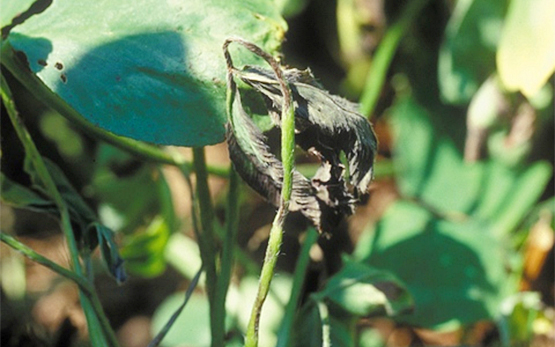Fodder crops can become diseased, and entire meadows and pastures can be destroyed. To prevent this, Agroscope is constantly breeding new varieties of grasses and clover.
Like other cultivated plants, grasses and clover can be attacked by diseases or become infested with pests. In fodder-crop breeding, we select plants that show a natural resistance to the major pathogens occurring naturally in the field. These resistant plants are the basis for the development of new varieties. In other cases, young seedlings are artificially inoculated with pathogens such as bacterial wilt or southern anthracnose in the greenhouse in order to select resistant plants. In addition, we are constantly developing new methods for infecting plants with various pathogenic agents, in order to make our breeding material resistant to a wide range of pathogens.
By forming new strains, pathogens can overcome the resistance of a variety, and challenge the success of a cultivar. For this reason, the virulence of the pathogen population must be monitored over a large area, and changes must be recognised in time. We bear this in mind particularly in the case of the rust fungi, for which we for instance determine the races in European crown rust populations.
Southern anthracnose is a major disease of red clover. Through specific crosses, we are attempting to explain the heredity of resistance and to introduce resistance genes into our breeding material.
A change in the climate or even in a cultivation system can lead to the occurrence of new pathogens in Switzerland. This must be recognised, and resistant plant material must be supplied for the breeding process. Only in this way can we be sure that tomorrow our meadows and pastures will still yield good fodder for our animals.






